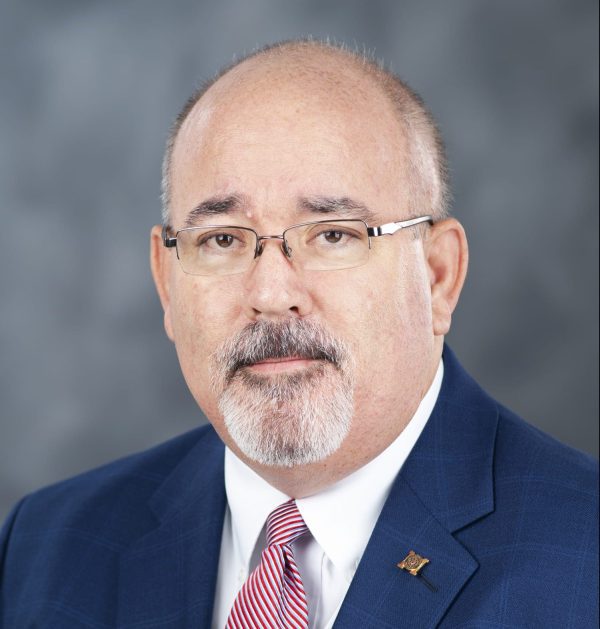
Jonathan Bain
- Jonathan Bain writes that proponents of the “one door” policy aren’t forthcoming about the negative side effects the policy can have, creating a one-stop-shop welfare concierge service.
Lately there have been rumors swirling that several states are considering adopting a “one door” policy, mimicking Utah’s policy from the late 1990s. In fact, lawmakers in Mississippi have committed to forming a task force to explore the possibility. A “one door” policy integrates welfare policies and creates a singular access point, managed by one case worker.
Proponents of the policy laud the convenience, arguing that it would streamline eligibility determinations across several programs and revitalize the workforce because such an approach would be rooted in helping enrollees transition from welfare to work.
However, proponents of the “one door” policy aren’t forthcoming about the negative side effects a policy like this can have—creating a one-stop-shop welfare concierge service.
Utah implemented its “one door” policy in 1997 and the results aren’t something other states should want to replicate. For starters, labor force participation rates have declined since the policy went into effect—five percent lower in 2024 than the year prior to implementation. Meanwhile, food stamp enrollment has grown by 54 percent, Medicaid enrollment by 56 percent, and Medicaid spending has skyrocketed by 675 percent—nearly eight times larger than the year prior to “one door” going into effect.
Despite the window dressing of proponents, Utah’s “one door” policy has been an objective failure—workforce participation is down, and welfare enrollment is up, a losing combination under any circumstance.
Proponents of implementing a similar “one door” policy in Mississippi might be surprised to learn that left-leaning policy organizations have been advocating for similar policies for more than a decade. Indeed, the Center on Budget and Policy Priorities (CBPP) have promoted “one door” language for nearly 15 years, led in part by Stacy Dean.
That name may sound familiar to you: Stacy Dean served as former President Biden’s Deputy Under Secretary for USDA’s Food, Nutrition, and Consumer Services—the agency that oversees the food stamp program. Dean and other Biden bureaucrats were responsible for the largest unilateral expansion of food stamp benefits in program history, and prior to joining the Biden administration, Dean was in a leadership position at CBPP where she routinely advocated for welfare expansion—lauding the “one door” policy as an apparatus for achieving that end.
Shifting the focus back to the Magnolia State, our leaders are right to be concerned. Despite routinely low unemployment numbers, Mississippi consistently ranks near the bottom for labor force participation rates nationwide. Put simply, too many Mississippians who are capable of working are choosing instead to sit on the sidelines. This is a serious problem that needs a solution, but rushing to do something versus the right thing would be detrimental. Streamlining welfare eligibility services for Mississippians who are choosing to remain on the sidelines can only exacerbate our labor crisis. If Mississippi’s leaders are serious about getting more residents into the workforce, there are solutions at their disposal—solutions that don’t involve expanding welfare in the Magnolia State.
For example, Mississippi—like all states—operates an Employment and Training (E&T) program for work registrants receiving food stamp benefits. Work registrants are able-bodied adults who must register for work, accept a suitable job offer, and participate in a state-assigned E&T program to remain eligible for benefits. E&T programs help food stamp recipients develop professional skills that can aid them in their transition back to the workforce.
Despite having a well-funded E&T program and partnerships with Hinds Community College, C-Spire, and the Refill Jackson Initiative, Mississippi only requires five percent of work registrants to participate, exempting the remaining 95 percent. There are currently 59,000 open jobs in Mississippi, yet state officials don’t require able-bodied adults on food stamps to participate in programs that cultivate skills needed to reenter the workforce. This is a missed opportunity that should be pursued instead of expanding welfare access.
Another opportunity for workforce growth can be found in reforming Mississippi’s unemployment system. Like most states, Mississippi allows unemployment claimants to receive benefits for a maximum of 26 weeks—regardless of the state’s economic situation. Instead, Mississippi should implement unemployment indexing—a commonsense reform that lowers the amount of time someone can claim unemployment benefits when open jobs are plentiful. When there are fewer open jobs, individuals can stay on unemployment longer.
All in all, Mississippi’s stagnant labor force participation rates represent a real problem for state leaders and residents alike. It’s a problem that must be addressed. However, attempting to fix this problem with a misguided “one door” style policy is wrong for Mississippi.








